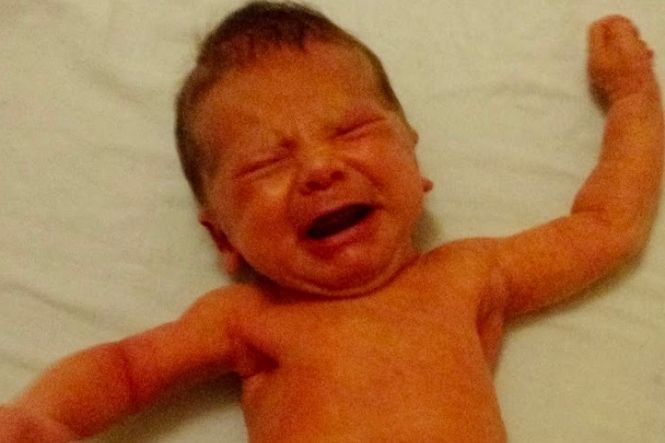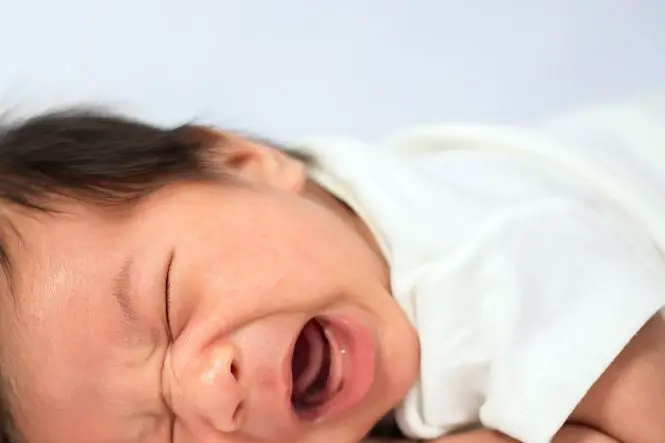Read this article to learn why your baby cries when putting their arms in clothes from deviating from a routine to sensitive skin.
Many factors can explain why your baby cries when putting arms in clothes. Most infants go through a phase where they don’t enjoy getting dressed, and there are obvious reasons like being dressed too quickly and others like diverting from a routine that can take some time to detect.
Sometimes a baby will cry while getting dressed for other reasons like being hungry or tired, which could mean that you should rethink what time of day you are dressing them. There can also be other factors in their life that are causing crying in general that getting dressed isn’t the critical issue.
However, it’s also possible that something about getting dressed is upsetting them. Sticking to a routine is very important for babies as it can be soothing to go through the same motions every day. Changing when, where, and how you are dressing your baby can cause discomfort, among other reasons.
Table of Contents
They Get Tired Of Being Pulled
You are constantly placing and pulling your baby throughout the day, whether positioning them in a car seat, high chair, or getting dressed. This constant pulling can cause discomfort in the infant and even soreness depending on the handling. It can also cause your baby to fuse from the treatment.
The best prevention of causing discomfort from pulling is to be gentle and slow with how you are dressing your baby and putting them in high chairs and other instances throughout their day. If there’s a way to limit how many times you put them in car seats or dress them in clean clothes, consider changing your routine slightly.
Also, look for signs that your baby is in pain or discomfort rather than objecting to dressing. It may be that a particular method you are using to dress your baby is uncomfortable for them, and you were unaware. Adjust your way and see whether there is a change in your baby’s response.
They Have Sensitive Skin
When a baby has sensitive skin, certain fabrics can hurt them. Fabrics like wool or polyester can irritate sensitive skin and, in some cases, cause a rash from an allergic reaction. The best way to check if your baby has sensitive skin or an allergy is to see if the act of getting dressed or being dressed causes them to cry.
Babies with sensitive skin will find certain fabrics to be itchy when next to their skin. This itchiness will also apply to blankets and fabric toys, so pay attention to whether they have a similar reaction to wool or other fabrics in general. If you notice a rash, it could be an allergy, and you should talk to your doctor.
Some fabrics that cause skin reactions:
- Formaldehyde resins are for waterproofing and resisting wrinkles.
- Pure cotton
- Elastic
- Polyester
- Nylon
- Acrylic
It’s best to avoid these fabrics and see if there is any change to how your infant reacts to having clothes on.
If you think your baby might have an allergy to these fabrics, here’s a list of some of the symptoms of a fabric allergy:
- Redness
- Scally Skin
- Itchy areas
- Irritation in areas with high contact with materials such as
- The crook of the arm
- Behind the knees
- Armpits
- The groin
You could see signs of an allergy within a few hours of dressing, or it could take days to appear, so keep track of what your baby is wearing and the areas of irritation to help narrow down what is causing a reaction.
You can check whether your baby is sensitive to fabrics by seeing if they only cause a fuse during the dressing process or if they seem to be upset with having clothes on generally. If there are certain outfits that they don’t like to wear, this could be another sign of sensitivity to certain fabrics. You might also want to consider your detergent.
After you speak with your doctor, and if it is a fabric allergy causing irritation, then there are a few things your doctor is likely to prescribe as treatment. Remember to follow your doctor’s advice and don’t try to treat your baby on your own.
Some treatments for a fabric allergy:
- Avoid any material with the fabric causing the reaction.
- Use a medicated cream on the irritated area by:
- Wash the skin thoroughly with soap and warm water, including your hands. Avoid any soaps with strong chemicals or scents that might trigger reactions.
- Apply the cream and a wet compress to the area of irritation.
- Wash your hands thoroughly after using the cream or lotion.
You Don’t Dress Them The Same Way Every Time
Most infants benefit from having a set routine regardless of whether it’s small events like getting dressed or more noticeable ones like when they wake up. Other babies are susceptible to habits and will find it disorienting to deviate from them. Changing when, where, and/or how you are dressing your baby can overwhelm them and cause stress.
You should have a set time to dress your baby to see if this addition to the routine helps prevent crying. If you do certain things in the morning, ensure that you are doing them in the same order every time so your baby can orient themselves better. Consider a similar tactic for undressing at the end of the day.
It would help if you also thought about where you are dressing your infant as changing between several locations can cause them stress. Lastly, think about how you are dressing your baby. Stick to putting bottoms and tops on in the same order every time. You may even need to consider which leg is put into bottoms first or arm into tops.
You Are Dressing Them Too Fast
Dressing your baby too quickly can cause sensory overload and even result in you handling them too roughly. Go slowly and allow your baby to adjust to what is happening, especially since they will not fully understand what is going on. Talking gently to them can also help relieve some of the stress associated with getting dressed.
If your baby cries every time you dress them, then it can be tempting for any parent to get the process done as quickly as possible. However, this tactic could be causing the crying in the first place, or at the very least, facilitating it. Rushing can cause stress in your infant and cause you to handle their limbs too firmly.
You might want to incorporate some rituals before dressing your infant to let them know they are about to get dressed. Move slowly and patiently as you dress them so you can see signs of stress and change your method if you need to. Try talking or singing while dressing them to help soothe them and make getting dressed more enjoyable.
You’re Handling Their Arms Wrong
Thinking that you can dress your baby in the same way you, as an adult, get dressed is incorrect. Lifting their arms over their head is likely to cause your baby to cry and scream, so you should instead put their arms into the sleeve elbows first, and they will straighten their arms on their own. Also, ensure that they are sitting up while dressing.
Getting dressed is something that most parents do every day without thinking about it. However, there is a method to dress a baby that doesn’t necessarily seem intuitive. One tactic to getting your baby’s arms into a shirt is to put their elbows through first instead of their hands and let them straighten their arms on their own.
You should also always dress your baby while sitting up since it can be confusing and indignant to get dressed lying down. However, your baby is unique, and you will need to try different methods to see what works best for them. Don’t be afraid to change little things and see how they adjust, and maybe you will find the best method.
Here are some quick tips for how to dress your baby:
- Start slow and talk to your baby throughout the process.
- Work carefully to avoid overextending their arms or putting them in an uncomfortable position.
- Ensure the clothes are the correct size and not too short or tight.
- Choose simpler clothing, such as a onesie or wrapping a blanket around them to keep them warm instead of a sweater or vest, and avoid sleeves altogether.
- Shorten the sleeves by gathering them up to the cuff, then carefully work the sleeve up their arm. This method is less stressful than trying to maneuver their arm through the length of the sleeve.
Conclusion
Some babies go through phases where they cause a fuse for many different reasons that have nothing to do with getting dressed, whereas others have issues with the dressing process itself. Some babies have sensitive skin or allergies to fabric that can make wearing clothes uncomfortable for them. Others need a strict routine, or they feel overwhelmed.





